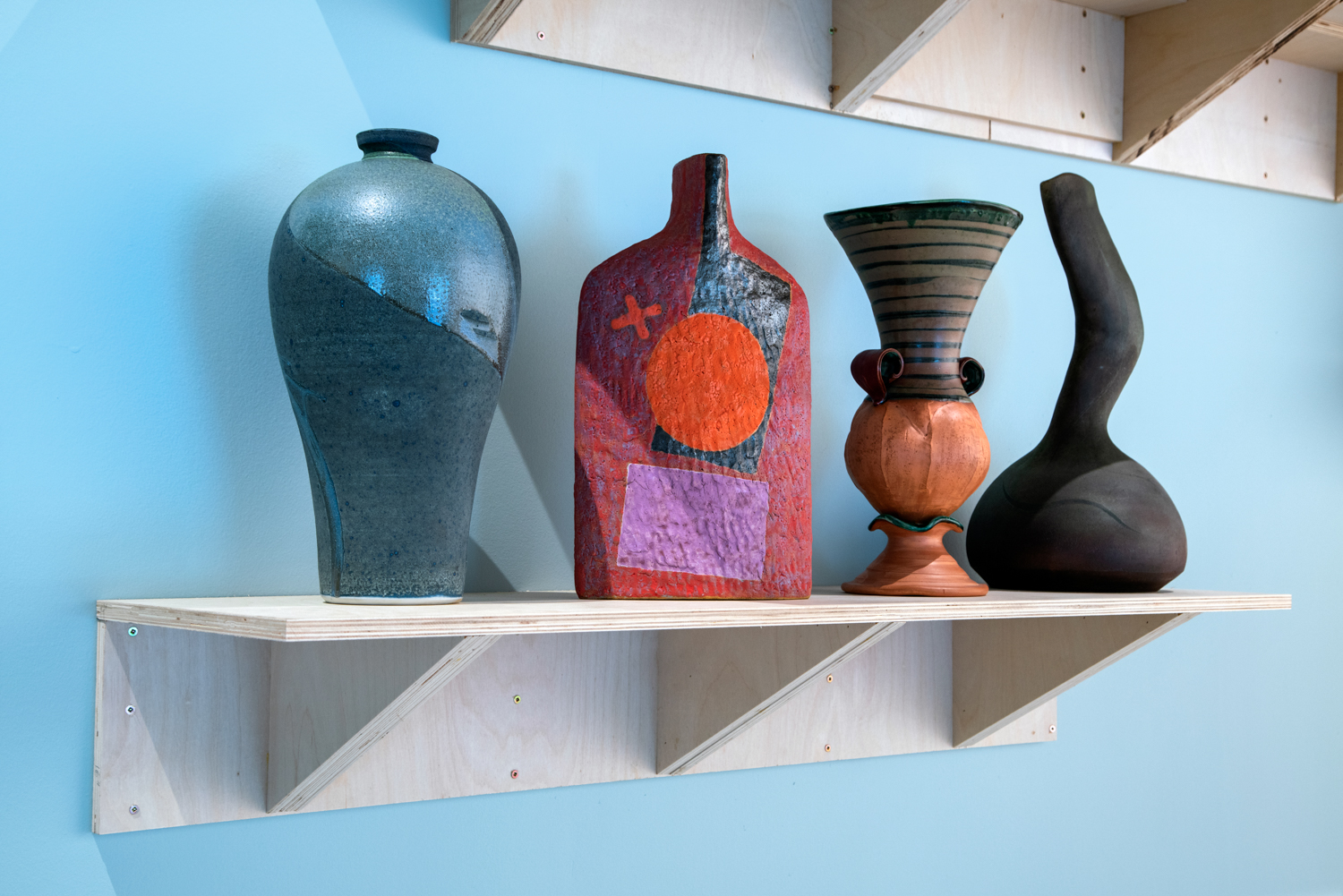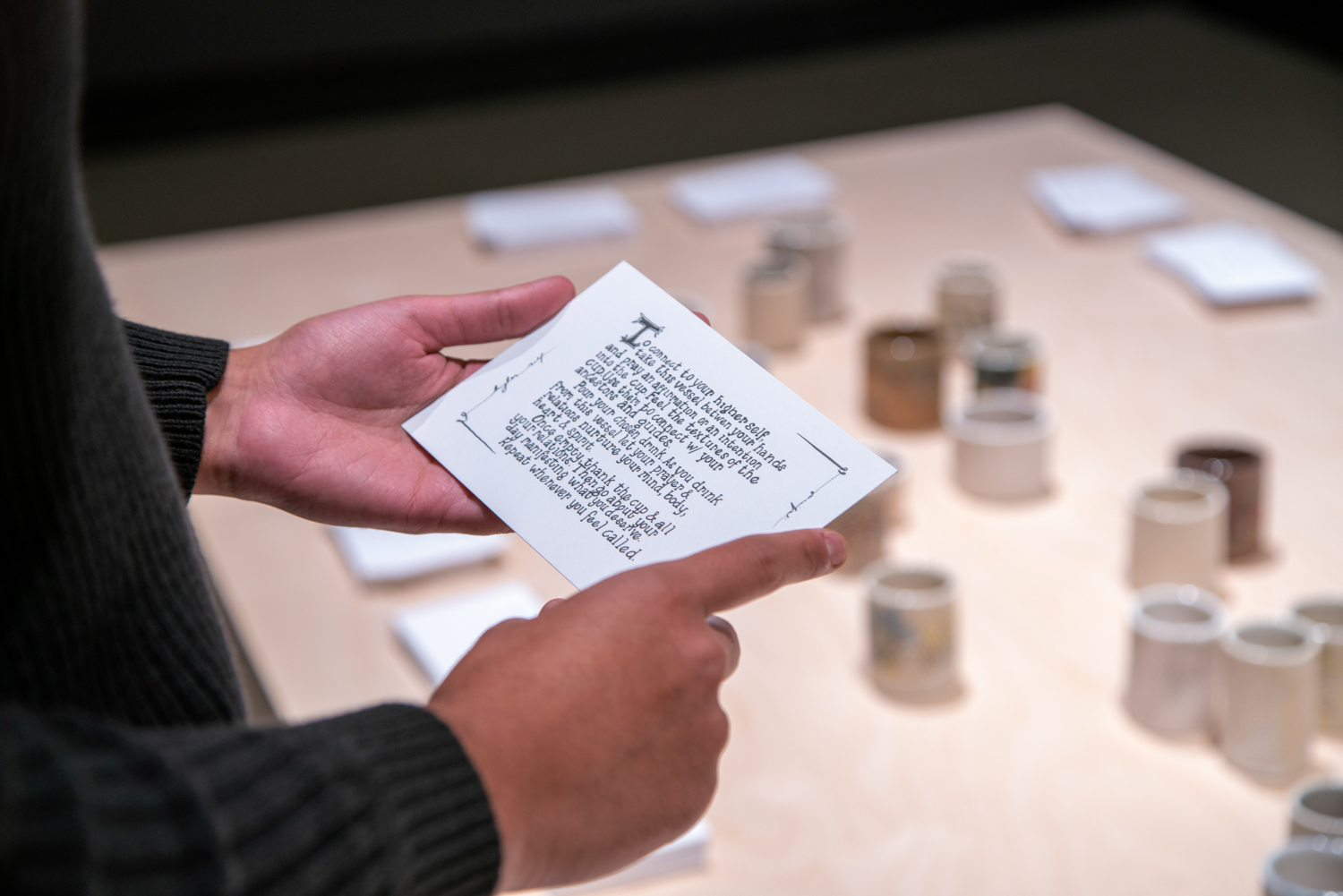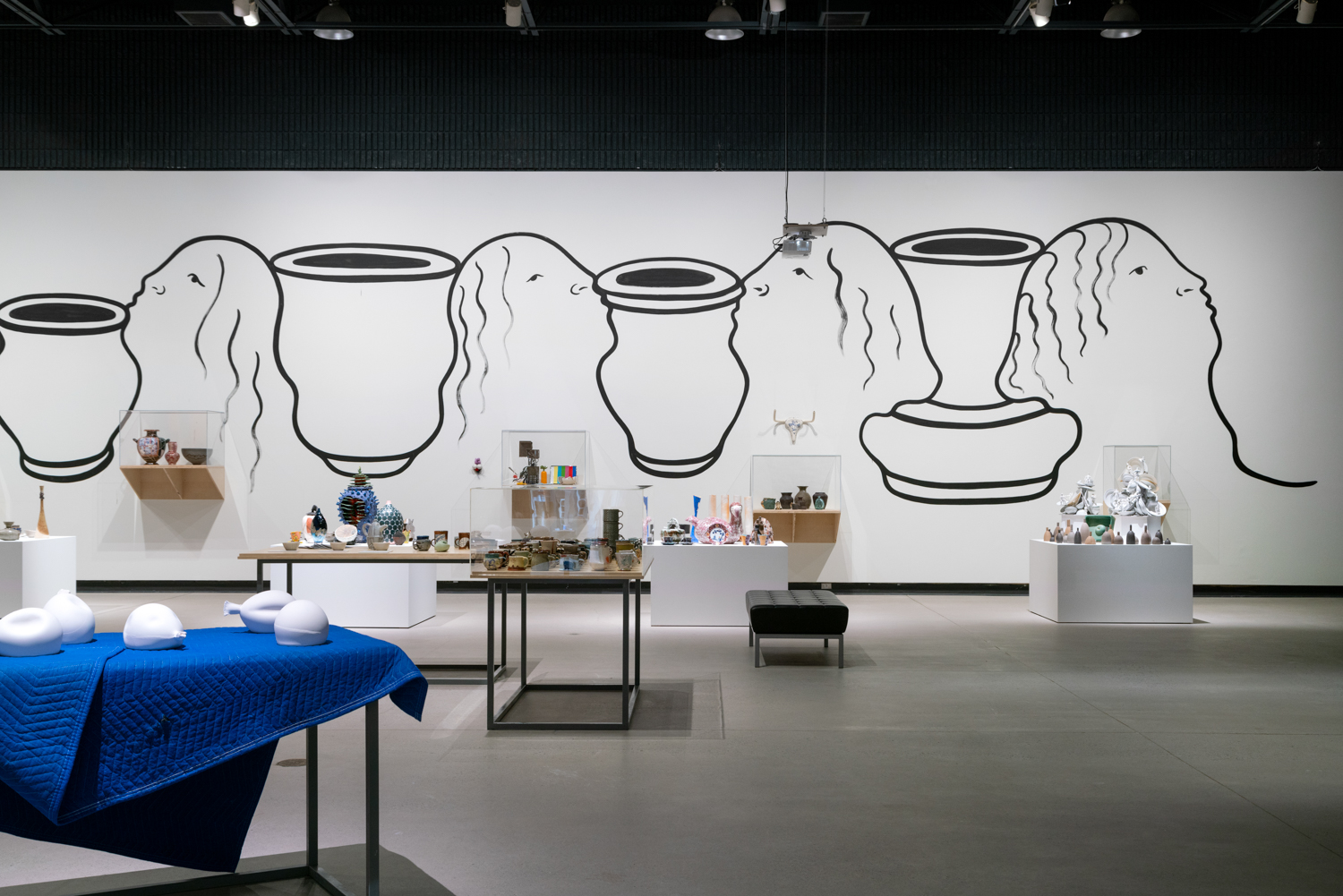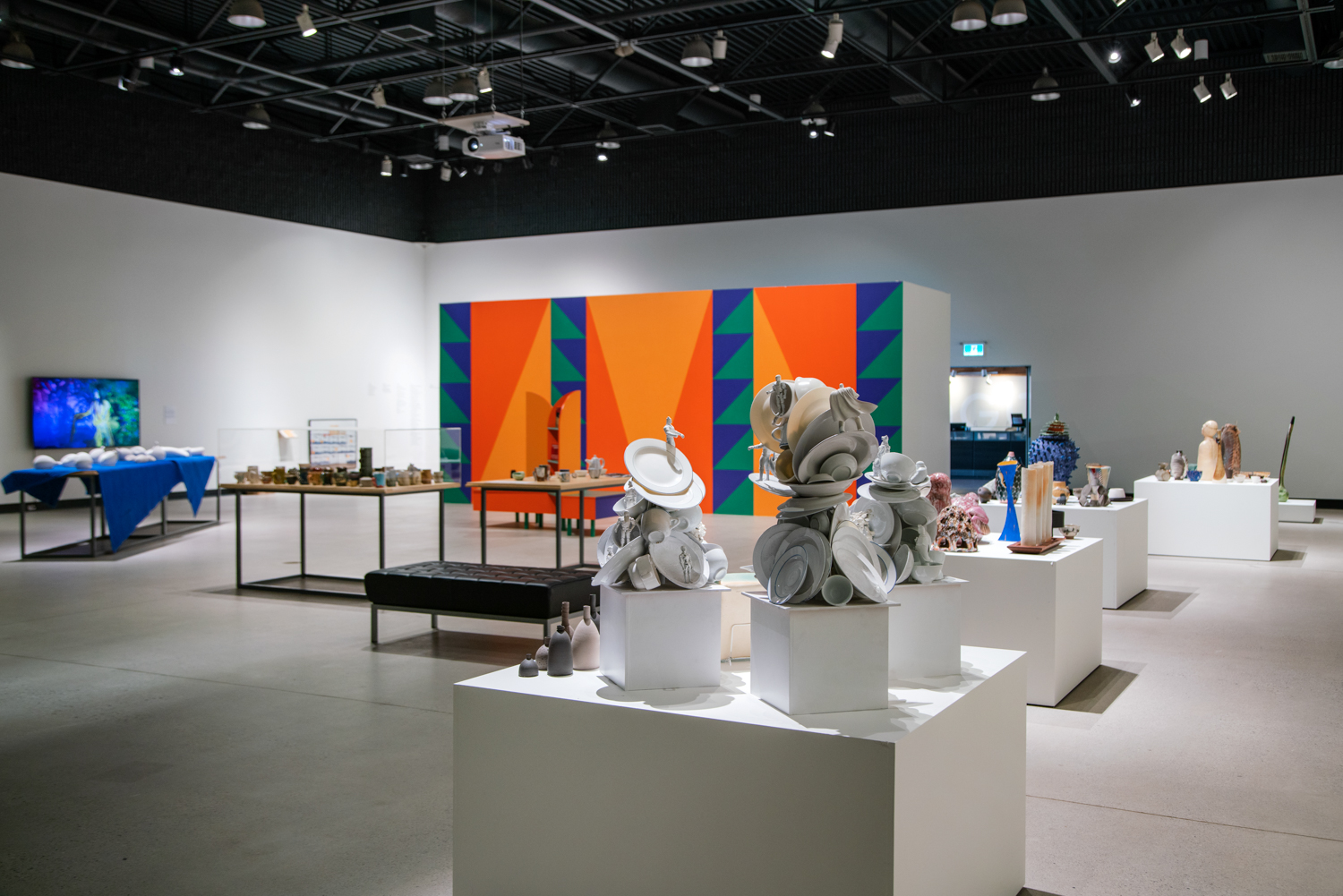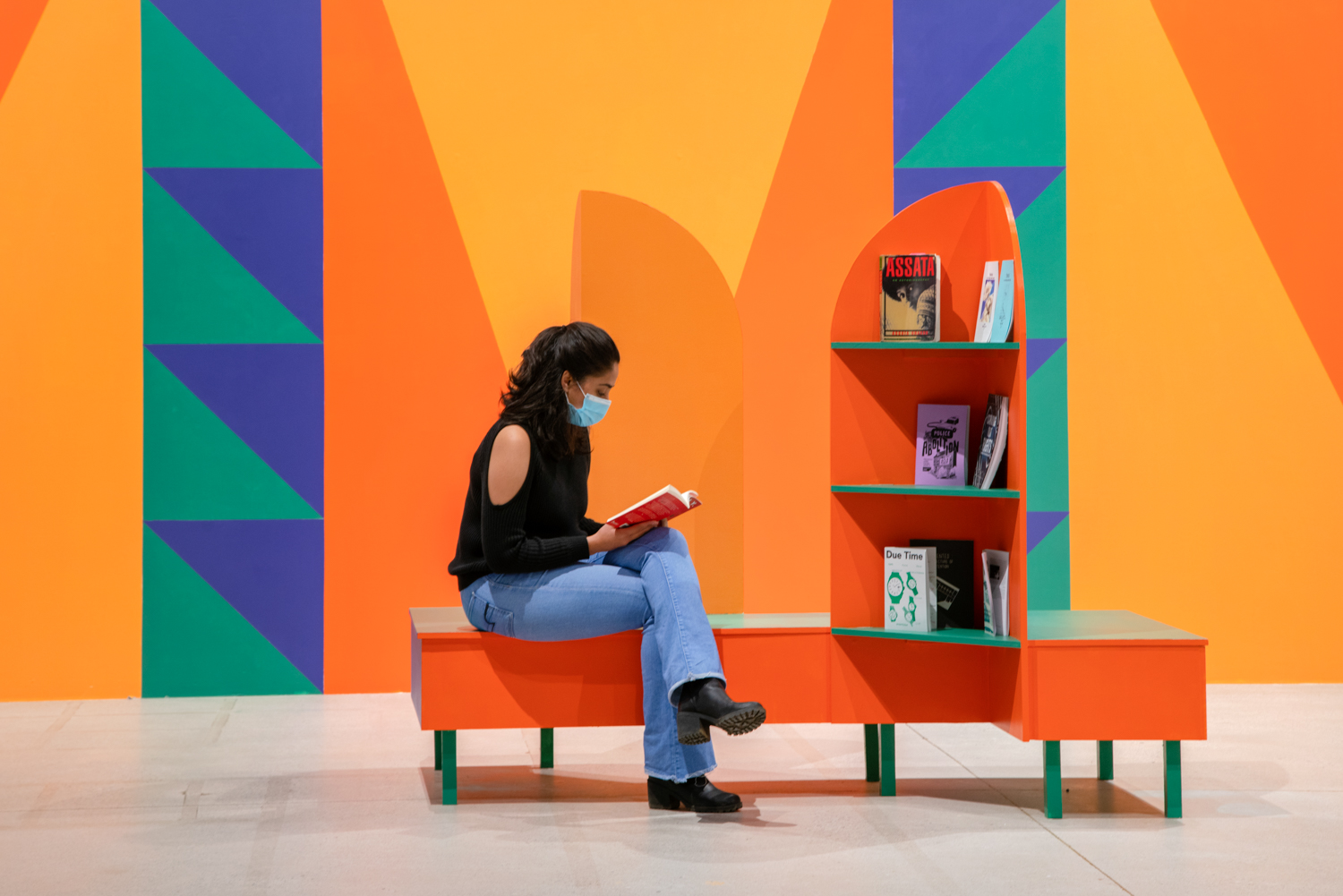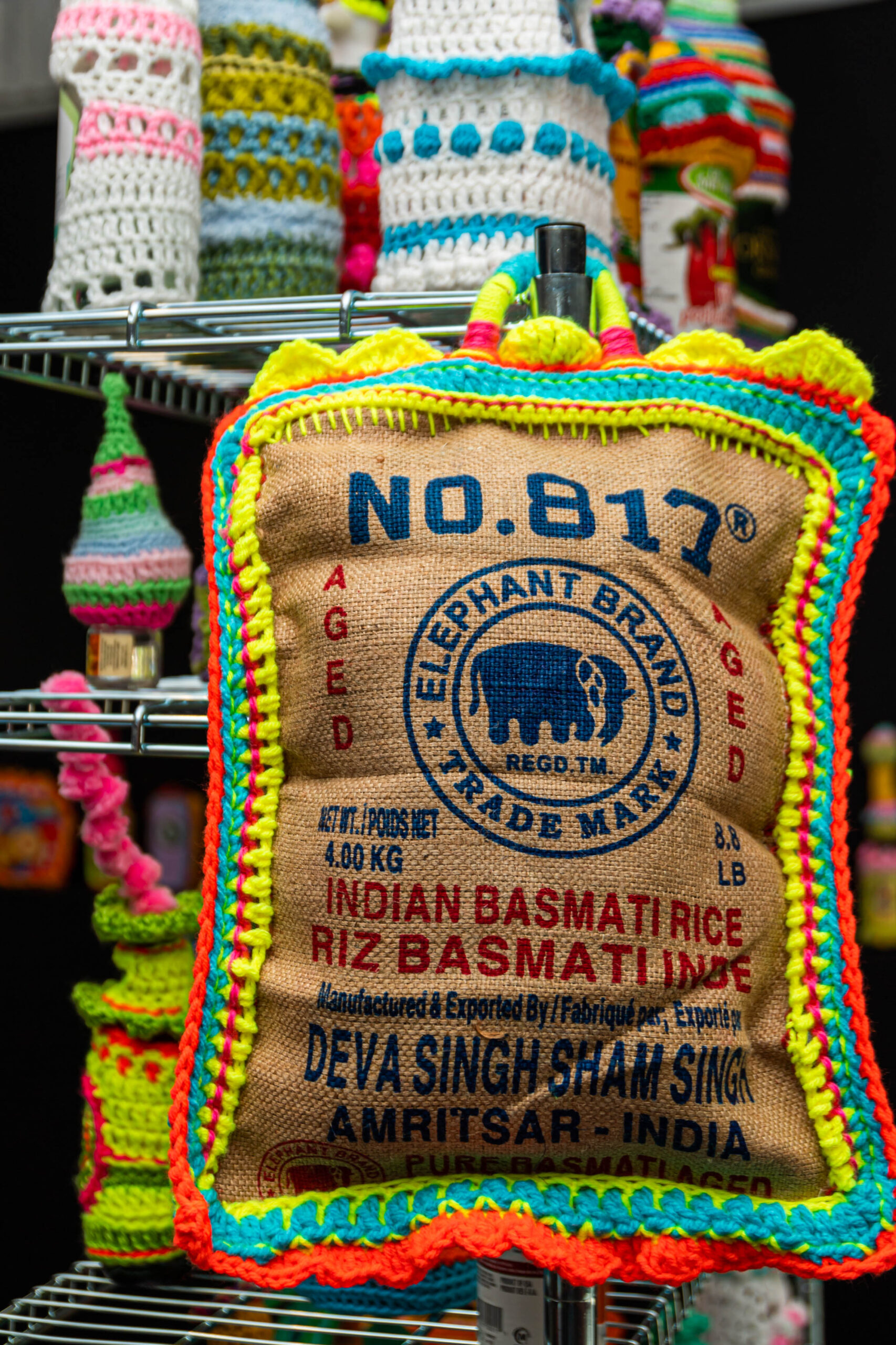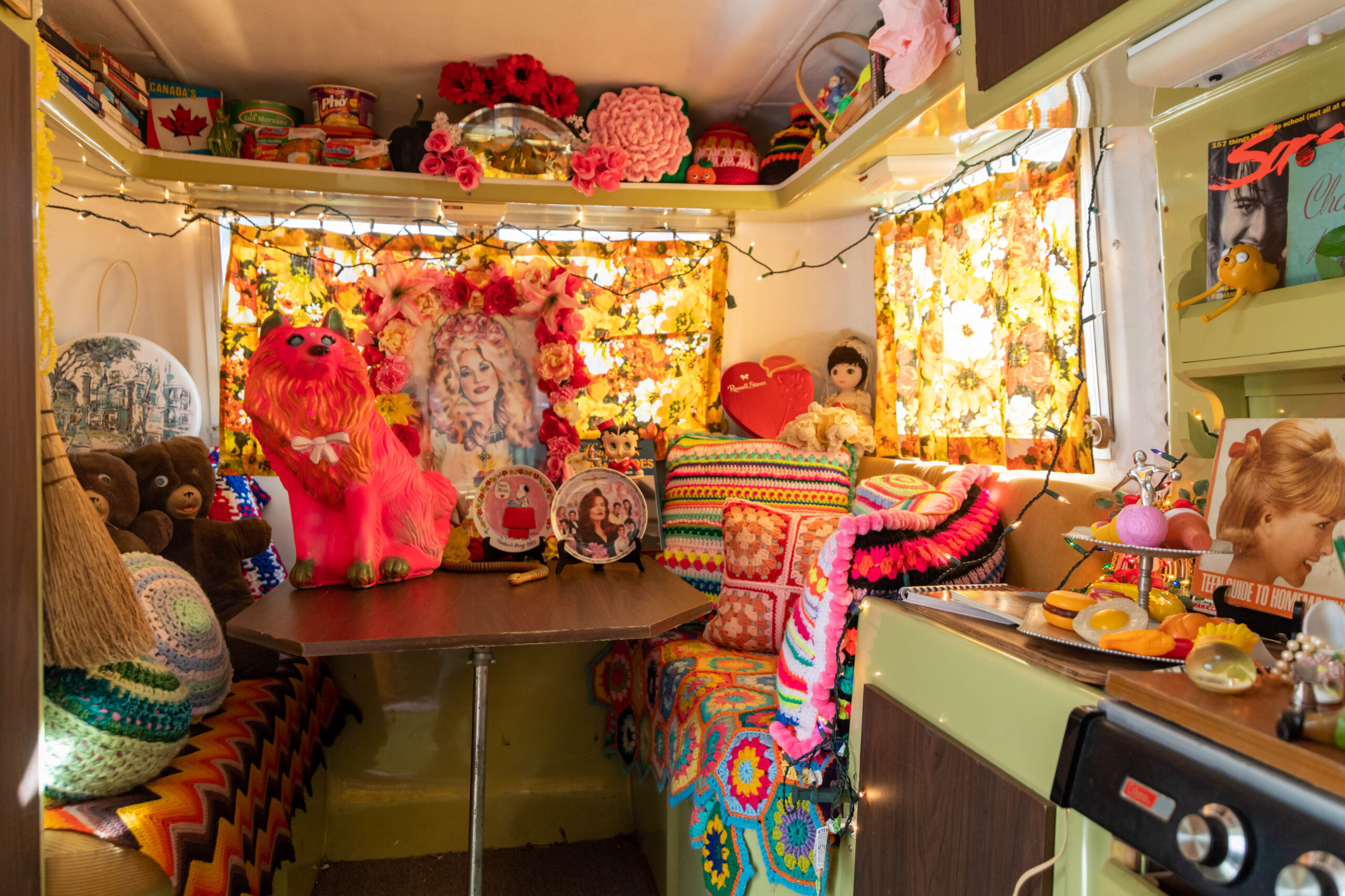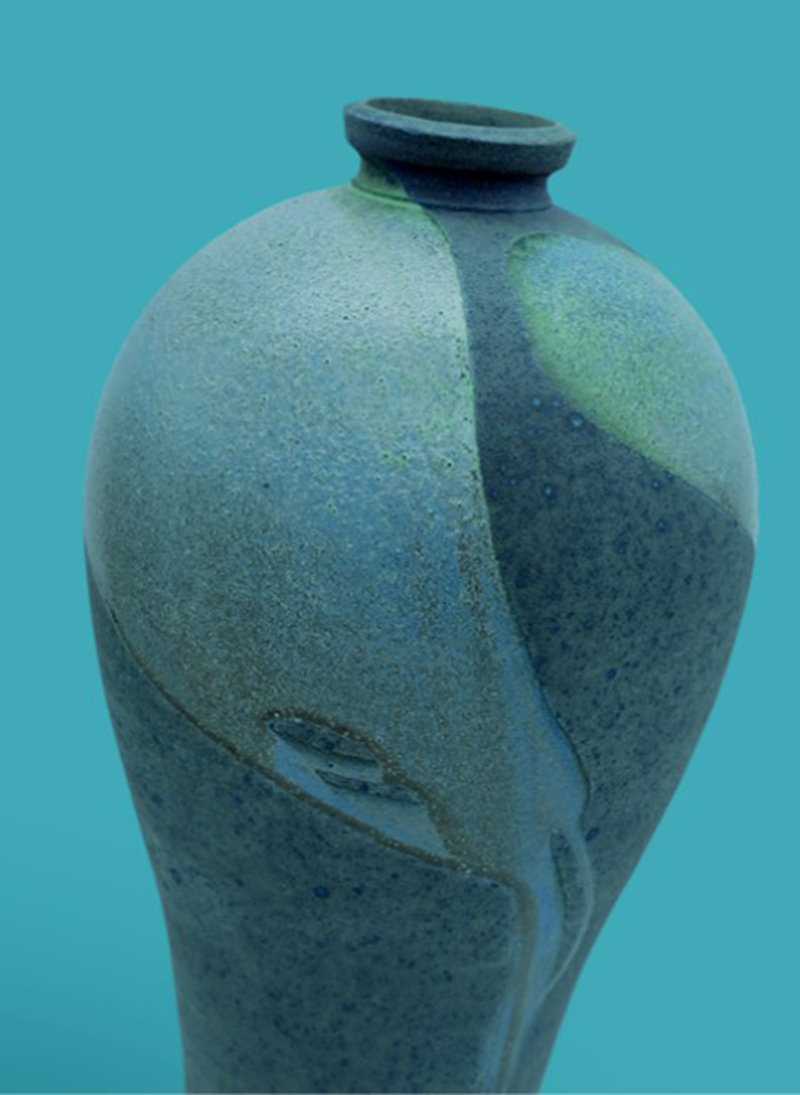
Featured Artists: Marissa Y Alexander, Althea Balmes, Anong Beam, Francisca Benítez, Tamyka Bullen, Nicole Clouston, Bojana Coklyat, Rania El Mugammar, Sameer Farooq, Shannon Finnegan, Naoko Fukumaru, Shaya Ishaq, Beatriz Paz Jiménez, Joon Hee Kim, Myung-Sun Kim, Ivy Knight, Vanessa Kwan, Ness Lee, Pamila Matharu, Primal Studio, Noe Martínez, Mark Menjivar, Peter Morin, Lisa Myers, Haruko Okano, Karla Rivera, Jamie Ross, Sin Wai Kin, Stephanie Singh, Nurielle Stern, Amina Z. Suhrwardy, Isola Tong, Camille Turner, Adam Williams, Kendra Yee, Zo’tz* Collective, and work from over 550 AGB Permanent Collection artists.
Documentation: Yuula Benivolski
More Info: Art Gallery of Burlington
Download: Full Exhibition Text
HOW TO READ A VESSEL
Art Gallery of Burlington
Burlington, Ontario
September 10, 2021 – January 9, 2022
Curated by: Tara Bursey, Suzanne Carte, Ness Lee, Su-Ying Lee, and Christine Saly-Chapman
“We’ve all heard about the sticks and spears and swords, the things to bash and poke and hit with, the long, hard things, but we have not heard about the things to put things in, the container for the thing contained. That is a new story.”
Ursula K. Le Guin, Carrier Bag Theory of Fiction
Over the last 38 years, the Art Gallery of Burlington (AGB) has amassed the largest comprehensive collection of contemporary Canadian ceramics in the world. Totaling over 4,000 works, the collection ranges from functional ware to sculptural installations.
How to Read a Vessel is an experimental exhibition and communal site of learning that openly discusses the challenges and excitement of holding, caring for, and exhibiting this object-based, craft-forward permanent collection, while continuing to develop a vision that incorporates critical social practice at its core.
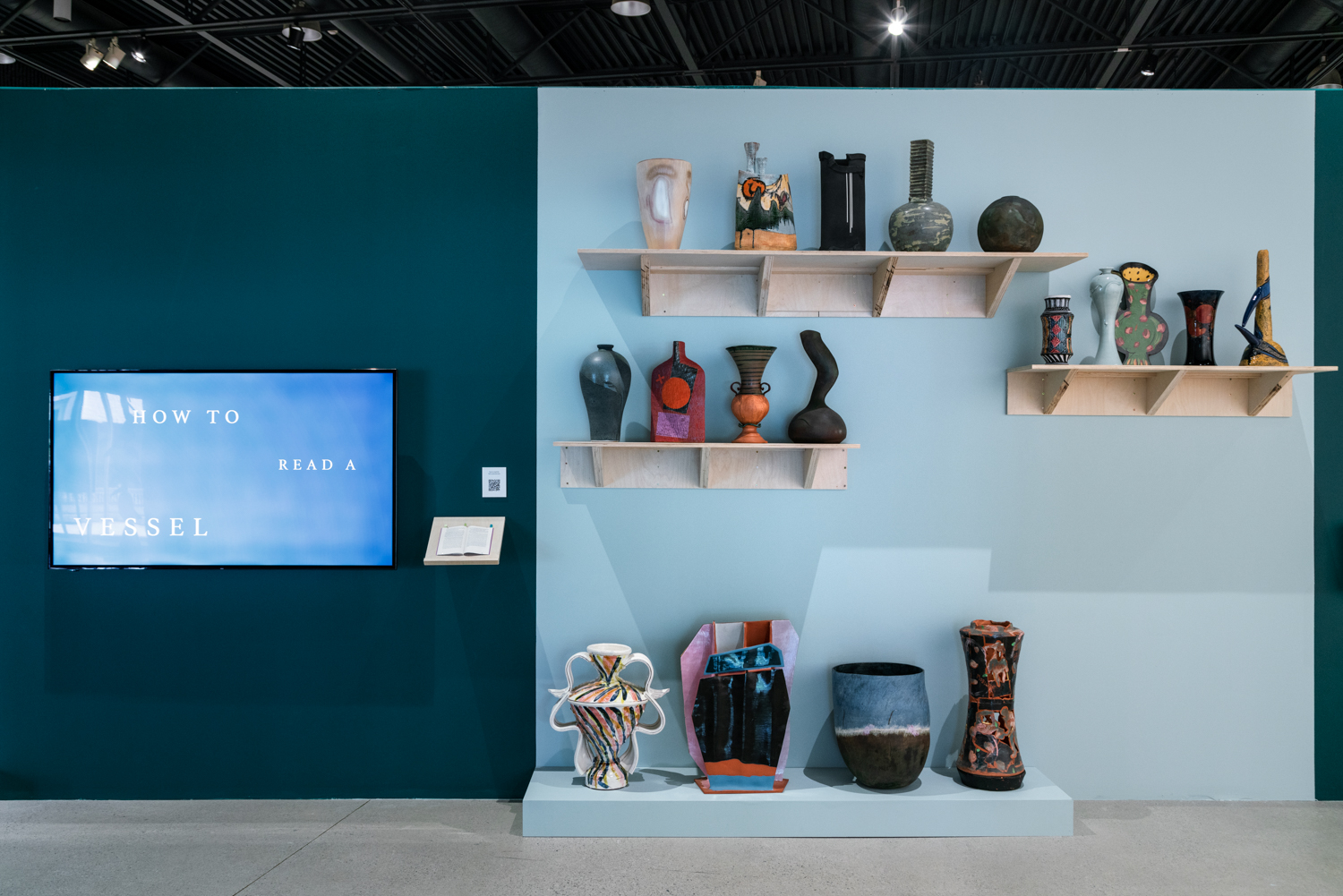
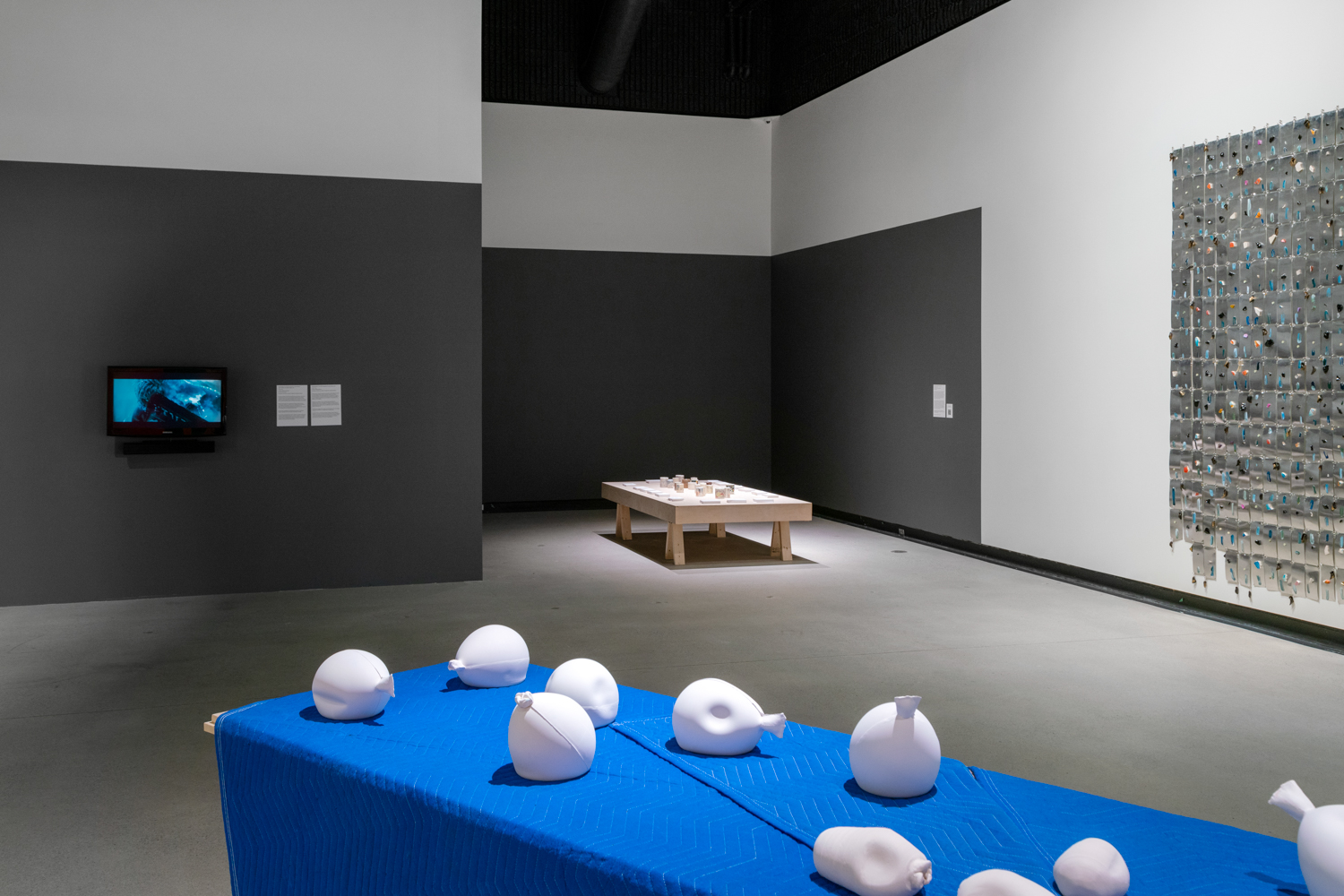
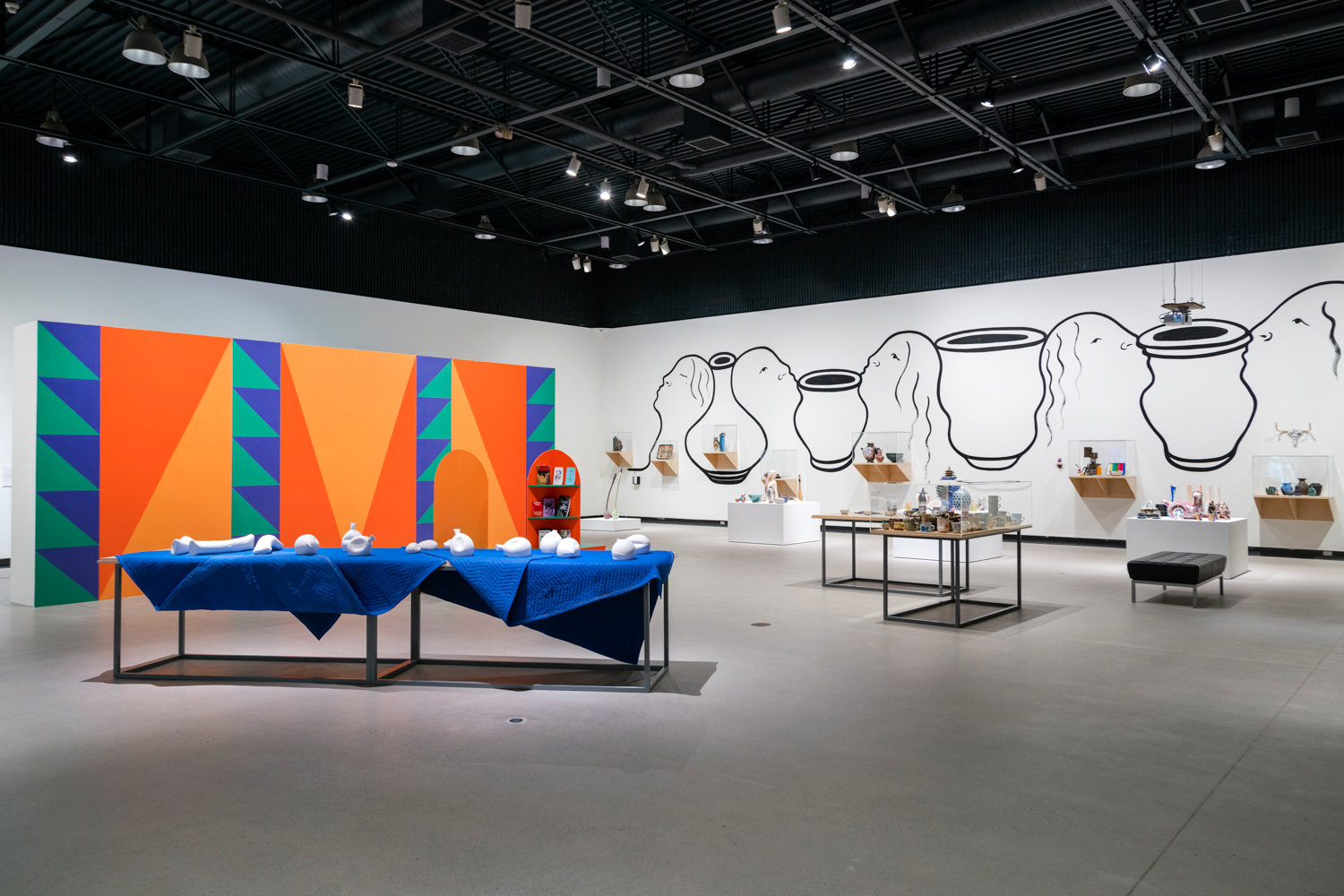
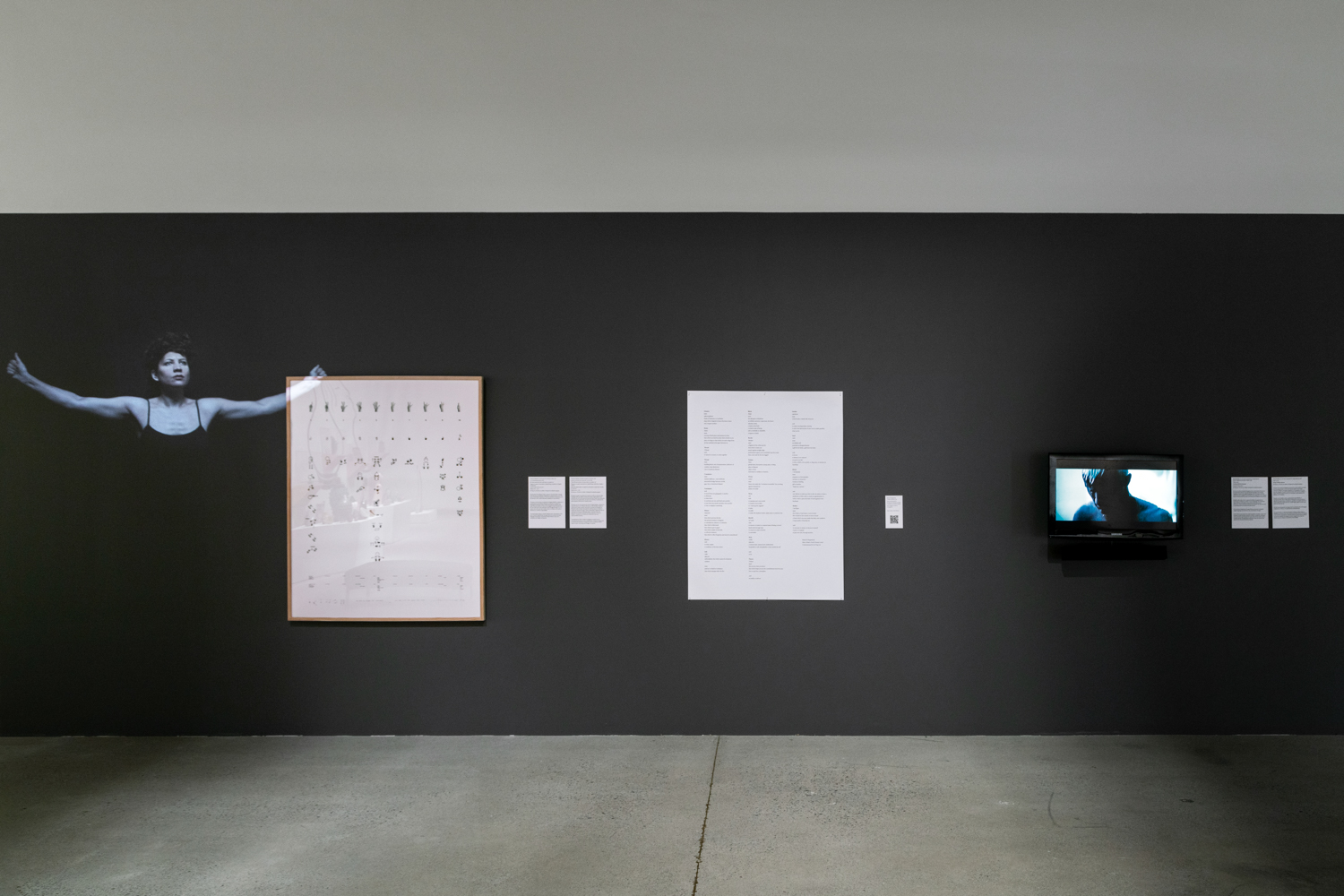
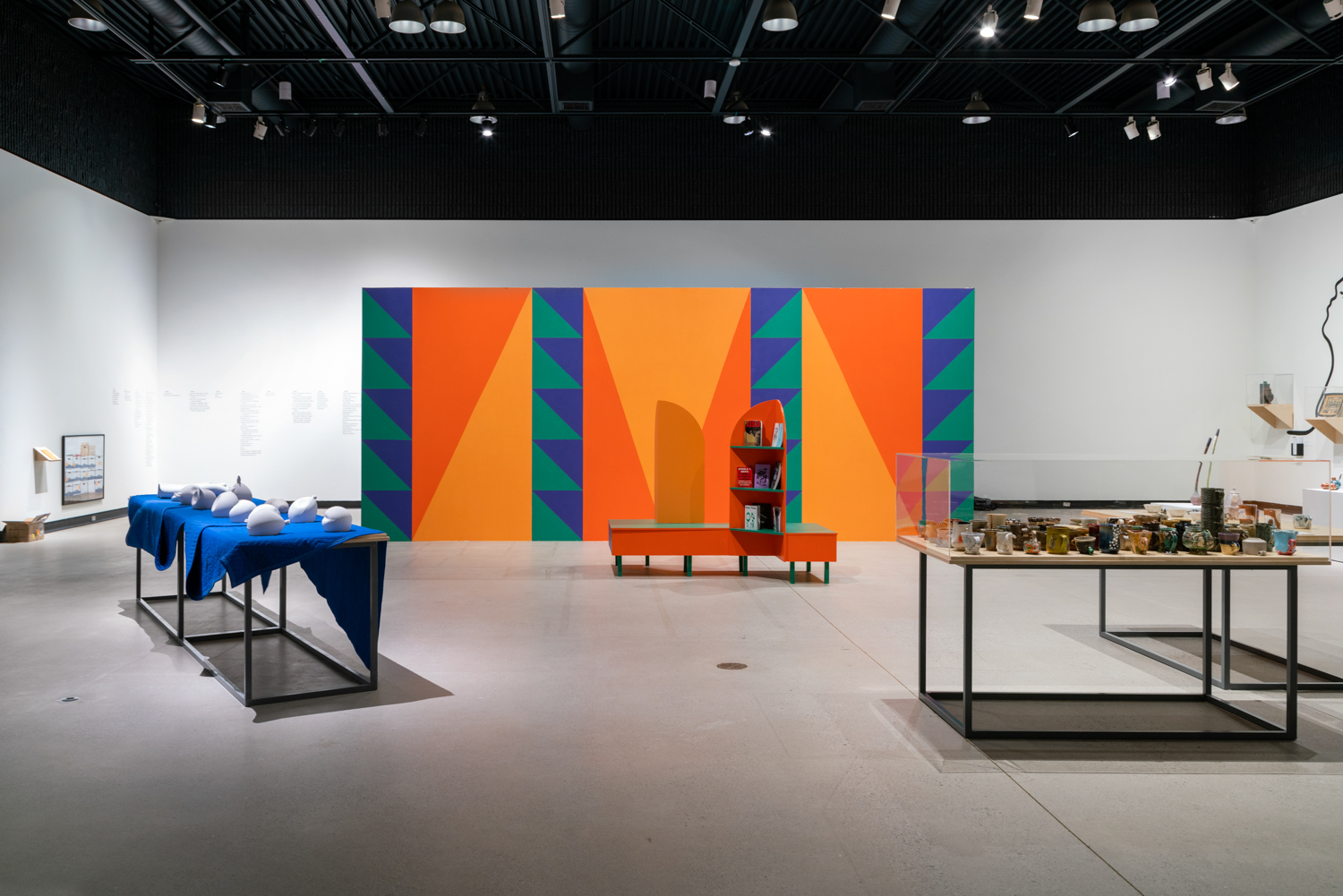
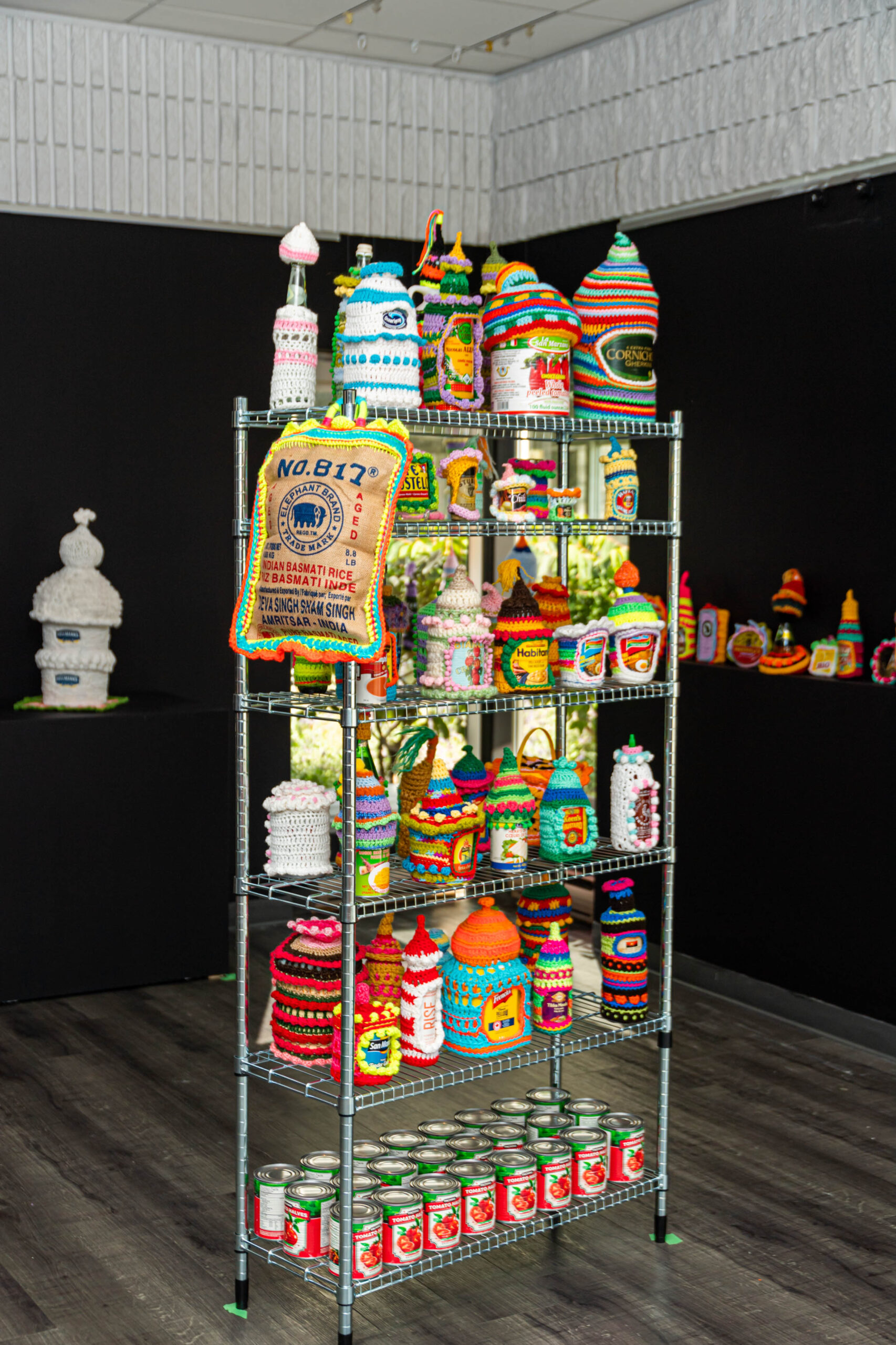
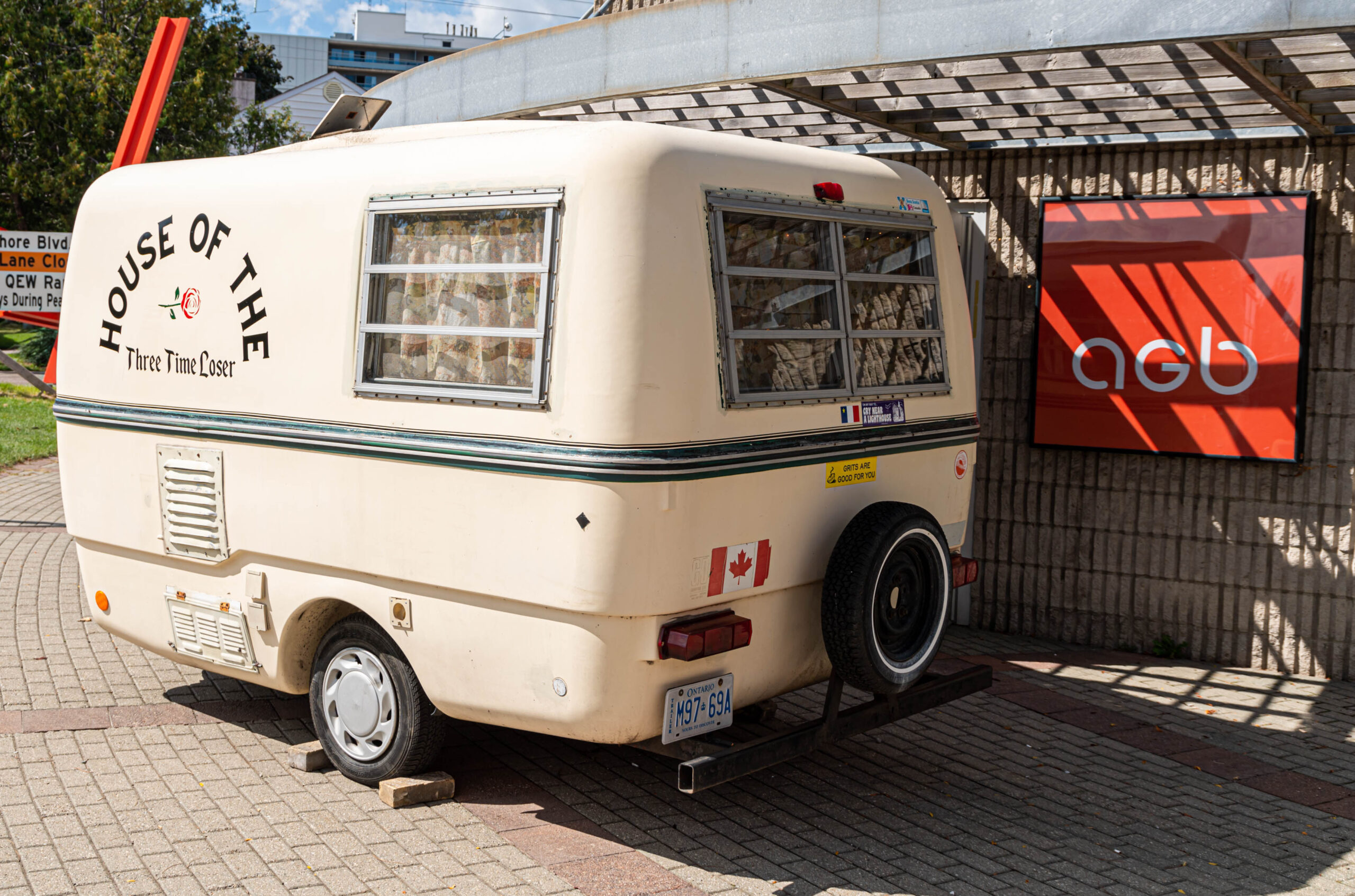
With these texts as a guiding force, the exhibition examines how a collection of vessels speaks to an unaccounted and unrecognized history of women’s ingenuity and labour in the arts. How to Read a Vessel unpacks the matriarchal history of craft production and the AGB’s own institutional beginnings by bringing its ceramic vessels out of their vaults and into the public space, alongside newly commissioned pieces and an array of international artworks. It is a non-linear, queer exhibition exploring the vessel as language, lineage, containment, nourishment, and archive. Within it, art objects become metaphors, or mnemonic devices, to discuss the colonial constructs of collections and their histories.
